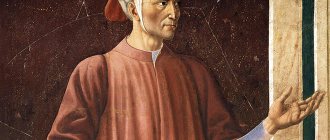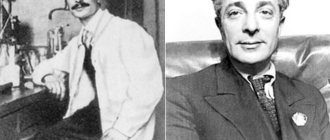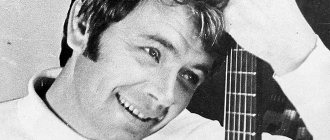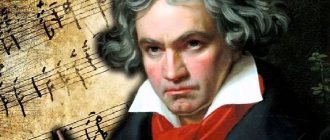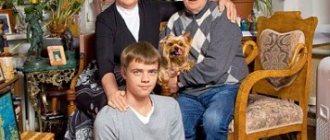Content
- 1 Biography 1.1 Domestic policy
- 1.2 Foreign policy
- 1.3 Murder
- 3.1 Myth: The Emperor colluded with Napoleon
- 7.1 Major projects of the era of Paul I
Biography
Pavel Petrovich was born on September 20, 1754, the son of Peter III and Catherine II. From a very early age, he was taught literacy and various sciences: the future monarch studied history, mathematics, foreign languages and geography. According to the recollections of his teachers, Pavel was a man of lively mind, beautifully gifted by nature. His childhood was difficult, as he lost his father early. Moreover, he lost it, as he himself believed, through the fault of his mother. Pavel loved Pyotr Fedorovich very much and could not forgive his mother for his death.
Pavel Petrovich in his youth
At the age of 17, Catherine II married her son to Princess Wilhelmina, who was named Natalya Alekseevna at baptism. Natalya died during childbirth. In 1776, Paul I married for the second time. The wife of the heir to the Russian throne was Sophia-Dorothe, who at baptism took the name Maria Feodorovna.
Meanwhile, relations between Pavel Petrovich and Catherine II became increasingly cool. After the wedding, the Empress gave Gatchina to the couple. In fact, this was a real exile, an attempt to remove the heir from the court. Here, in Gatchina, Paul I got his own army: he was sent half a company of sailors, an infantry battalion and a cuirassier regiment. Pavel Petrovich devotes a lot of time to his soldiers, organizing various exercises and reviews.
In 1777, his son was born, who was named Alexander. The boy was immediately taken from his parents, and his upbringing was carried out by people appointed by the empress herself. Pavel and Maria could visit their son only on special days. Pavel tried to participate in the political life of the country, but his mother suppressed any of his undertakings and initiatives.
After the death of Catherine II, Paul I was crowned king. Pavel Petrovich ascended the throne without having great skills in public administration. When he became monarch, he was already 42 years old. He was already an accomplished, bright and extraordinary person. His very first act on the Russian throne was the coronation of Peter III. The ashes of Father Paul were removed from the grave, then the coronation ceremony was carried out and his subsequent reburial in the Peter and Paul Cathedral, next to his wife Catherine II.
Domestic policy
On April 5, 1797, Paul I was anointed king. On the same day, a decree on succession to the throne was issued. Now the direct descendants of the monarch through the male line became the heirs to the Russian throne. Women could take the Russian throne only in the absence of male representatives from the ruling dynasty. Paul I restored the State Council, created under Catherine II, but not functioning for a long time. The number of its participants was increased from 7 to 17 people. In 1796, the Senate was also reformed, which could not cope with its duties due to the increased number of cases. The size of the Senate has increased, and new rules of office work have appeared aimed at speeding up its work.
Paul I wearing the crown, dalmatic and insignia of the Order of Malta. V. L. Borovikovsky
The internal policy of Paul I caused discontent among the nobles, as the emperor tried to alleviate the situation of the peasantry. Also, by his decrees, he abolished Catherine’s “letter of grant to the nobility.” Now nobles were forbidden to ask for resignation if they had served as an officer for less than a year. The noble assemblies were abolished. The army reform carried out by Paul I caused great dissatisfaction. Prussian orders were established in the Russian army, and a new uniform was introduced. The army began to live under the strictest discipline.
Foreign policy
In 1798, an anti-French coalition was created, which included England, Austria, Turkey and Russia. The Black Sea squadron under the command of F. F. Ushakov was sent to the Mediterranean Sea. The Russian fleet liberated the Ionian Islands and Southern Italy from French occupation. In February 1799, a major battle took place for the island of Corfu, where a three-thousand-strong French garrison was defeated. Russian troops entered Naples and Rome. In 1799, Russia began the land phase of the war. At the insistence of the allies, the command of the troops was entrusted to A.V. Suvorov. In a month and a half of fighting, Russian troops managed to oust the French from Northern Italy. Suvorov makes a heroic transition from Northern Italy through the Alps to Switzerland. In 1800, Paul I made a sharp turn in foreign policy. He ceases hostilities and recalls troops to Russia. The Emperor first breaks the alliance with the Austrians due to their failure to fulfill allied obligations, and then with England. Having made peace with France, Paul I entered into an alliance with Prussia against Austria and with Prussia, Switzerland and Denmark against England. This was caused by betrayal on the part of England, as a result of which Russia lost the island of Malta, which it held under its guardianship. [1] [2] The worsening relations with England caused even greater discontent among the nobility, since England was Russia’s main partner in trade and the purchase of grain.
Murder
Meanwhile, dissatisfaction with the emperor grew more and more among the courtiers. So, on the night of March 11-12, 1801, a group of conspirators broke into his chambers and demanded that he abdicate the throne. Paul I refused and, in the ensuing fight, was killed. The soul and organizer of the conspiracy was P. A. Palen, the St. Petersburg governor-general and head of the secret police, a confidant of Paul I. [3] It is possible that the murder was prepared by the English government, since the sharp change in the emperor’s foreign policy towards an alliance with France was extremely undesirable suited the British, who feared war with Russia. [4] [5] His son, Alexander I Pavlovich, was proclaimed the new Russian emperor, who was aware of the conspiracy, although he may not have expected that his father would be killed.
The childhood of Paul the First and his attitude towards his parents - Catherine the Second and Peter the Third
Paul I was the unloved son of Catherine the Great. When he was only 8 years old, his father, Peter III, was killed on the orders of his mother. Next, Catherine II removes her son away from herself and from state affairs and settles him first in Pavlovsk, and then in Gatchina. When Paul came of age, many expected that Catherine II would hand over the Russian throne to him, as she had previously stated, but, naturally, this did not happen.
Abandoned and humiliated by his mother, Pavel hated her, her way of life, her countless favorites. This hatred will go with him until the end of his life and will be directly expressed in the policies pursued by Paul the First - all this policy will be, as it were, in defiance of the policies of his mother.
Paul hated Catherine II and was afraid. He was afraid that he would never ascend the throne. And, I must say, these fears were not groundless. Catherine saw her grandson Alexander Pavlovich (the future Emperor Alexander I) on the throne; as a child, she forcibly took him from his parents to raise him. Catherine II died without having time to transfer the throne to her grandson, bypassing Paul I, as she wanted.
Who was the father of Paul I? There is still no clear opinion on this matter. Catherine II had plenty of admirers. There is a version that Paul’s father was Count Saltykov, and there is also one according to which his father was the ex-king of Poland Stanislav Poniatovsky. During Paul's time there were rumors that Paul brought Poniatowski closer to him precisely because he saw in him his possible father. Most likely, Poniatowski was the father of Catherine II's daughter, who died as an infant.
Paul I himself always considered Peter III his father. Already being an emperor, and Paul ascended the throne as a mature 42-year-old man, he was looking for his father, admitting the possibility that his mother did not kill him, but imprisoned him in some monastery. An interesting fact is that after the death of Catherine II, by order of Paul I, his father was reburied next to Catherine II (previously Peter III was buried in the Alexander Nevsky Monastery), thus, not just the funeral of Catherine II took place, but, as it were, a joint funeral of Catherine II and Peter III. At the same time, it was announced that they were not burying Catherine II, but Emperor Peter III Fedorovich and his wife Ekaterina Alekseevna. Thus, Paul I, as it were, took revenge, expressed his attitude towards his mother, denying her the imperial title and corresponding individual honors after her death.
As emperor, Paul I sincerely and generously thanked the people who were devoted to Peter III and who were with him, as they say, to the end.
But a completely different fate awaited the mother’s favorites. Paul I got rid of them with his characteristic energy. Princess Ekaterina Dashkova was ordered to go to her Troitskoye estate and “indulge in memories of 1762.” The crypt in Kherson, in which G.P. is buried. Potemkin was destroyed, and the coffin was simply buried in the ground. Potemkin's Tauride Palace in St. Petersburg, and I must say it was one of the most beautiful palaces of that time, was turned into stables and an arena. Where the ladies and gentlemen of the era of Catherine II once shone, now there were horses. The city of Yekaterinoslav, which Potemkin dreamed of making the third capital and thereby creating another monument to Catherine II, was transferred from provincial cities to the rank of district cities. Due to his closeness to his mother, A.V. also fell into disgrace for a long time. Suvorov.
Reforms and achievements of Paul I
Succession to the throne
A new law on succession to the throne was adopted, which drew a line under a century of palace coups and female rule in Russia. From now on, women were actually excluded from inheriting the Russian throne. Now power was transferred from father to eldest son, and if the ruler died without leaving an heir, to his brother (which is clearly seen in the example of Alexander I and Nicholas I). For the first time, the rules of the regency were established. [6] [7] [8]
Nobility
- Pavel o, who forbade the use of corporal punishment to the noble class. Corporal punishment was introduced for murder, robbery, drunkenness, debauchery, and official violations. [9]
— The nobles were obliged to pay a tax to maintain local governments in the provinces. Later the tax amount was increased. [10]
— The Emperor forbade allowing nobles dismissed from service for misconduct to participate in elections. The number of voters was reduced, and governors gained the right to interfere in elections. [eleven]
— Paul I forbade nobles who served as officers for less than a year to ask for resignation.
- Paul I ordered that nobles evading civil and military service be brought to trial.
— The nobles began to pay a tax of 20 rubles each. [12]
Portrait of Grand Duke Pavel Petrovich as a child. F. Rokotov, 1761
Peasants
— It was forbidden to sell serfs and peasants without land, and to separate families during the sale. [13] [14]
— The grain tax, which was ruinous for peasants, was abolished and non-payment of taxes was forgiven. [15]
— The right of state-owned peasants to register as merchants and philistines was indicated. [16]
— In the provinces, governors were ordered to monitor the attitude of landowners towards peasants. In case of cruel treatment of serfs, governors were ordered to report this to the emperor. [17] [18]
— With the “Manifesto on the Three-Day Corvee,” Paul prohibited landowners from performing corvée (the work of serfs on the landowner’s land) on Sundays, holidays, and more than three days a week. [19] [20]
Army and Navy
— Introduction of troop uniforms, almost entirely borrowed from Prussian models. The new uniform had a useful innovation - overcoats, which later saved many Russian soldiers in the Napoleonic Wars. [21]
— Large-scale construction of barracks has begun.
— Fundamentally new divisions have appeared - engineering, courier, cartographic and others. [22]
— Strict punishments were introduced for desertion and violations of army regulations.
— For the first time in Europe, award badges were introduced for privates.
— The rights and obligations of military personnel are regulated. [23]
— Military districts and inspections have been created.
— New military regulations have been put into effect: “Military Regulations on Field Infantry Service”, “Military Regulations on Field Hussar Service”, “Military Regulations on Field Cavalry Service” [24] and “Charter of the Military Fleet”. [25]
— For cruel treatment of lower ranks, officers were subjected to strict penalties. [26] [27]
Emperor Paul I. Vitaly Ermolaev, 2005
— A defense strategy has been developed.
— Infirmaries were established for each regiment. [28]
— About 20 battleships and about 15 frigates were built. Many ships of earlier construction underwent major repairs and remained in the fleet for a long time. [29]
Administrative reforms
Pavel managed to carry out a number of reforms aimed at further centralizing state power. In particular, the functions of the Senate changed and its size increased, some collegiums abolished by Catherine II were restored. The State Council was restored. In 1798, a decree was issued on the creation of a department of water communications. On December 4, 1796, the State Treasury and the position of state treasurer were established. [thirty]
Other
— Paul issued a decree allowing the construction of Old Believer churches in all dioceses of the Russian state. [31]
— The pressure on the Orthodox Church was also stopped. When the church became a seedy appendage of the state, Paul began to return to the church the property and estates that had been taken away. Rights and privileges were partially restored. First of all, this concerned monasteries. [32]
— Service dog breeding was founded in Russia - this gave rise to the development of cynology.
— Audits of government institutions and services were carried out. Significant sums were recovered in favor of the state.
— The death penalty has been abolished.
[33]
— By order of Paul, the Mikhailovsky [34], Priory [35] and Marienthal castles [36] were built. Construction of the Kazan Cathedral has begun on Nevsky Prospekt in St. Petersburg. A monument to Peter I was erected with the famous inscription “Great-grandfather - great-grandson.” [37]
Also, the achievement of Paul I can be considered the actual annexation of the island of Malta to Russia, which was later interrupted by its capture by the British [38] [39].
Mikhailovsky Castle and its role in the life of Paul the First
The history of the creation of the Mikhailovsky Castle deserves special attention, since it characterizes the personality of the emperor in a certain way.
After Napoleon Bonaparte captured Fr. Malta, Paul I takes patronage of the Maltese Knightly Order and becomes Master of the Order of Malta. So, Emperor Paul I is a knight. And every knight gets a castle. The foundation of the Mikhailovsky Castle begins (please note - not a palace, but a castle). It was built on the site of Elizabeth's summer palace, where Paul was born. The emperor is credited with saying: “Where I was born, that’s where I want to die.” Ironically, this will happen.
The castle really looked like a knight's castle. It was surrounded on all sides by water: the Fontanka and Moika rivers and a specially dug ditch. A single drawbridge led to the castle. It is over this bridge that the conspirators will cross on the night of the assassination of Paul I. A stone wall was built around the castle, against which there were cannons. There was a guard at the entrance to the castle. All the facades of the Mikhailovsky Castle were decorated differently, which is why it seemed that when you walked around the castle, each time you saw a new, different building. The castle seemed to change before our eyes.
The castle was built day and night (at night the construction site was lit with torches), trying to fulfill the emperor's order to rebuild the castle in a year.
On November 8, 1800 (the day of Archangel Michael, the patron saint of Paul I), all the bells of the capital rang in honor of the opening of the Mikhailovsky Castle. And in February 1801, the emperor and his family moved to the castle from the Winter Palace. However, it was difficult for invited guests to appreciate the interior decoration of the castle. It was not possible to solve the problem of dampness and cold, and the stoves inside the castle smoked heavily. Therefore, fog and twilight reigned in the castle. It was extremely uncomfortable. The guests, chilled and wandering around the castle in the fog, were disappointed.
In front of the castle there was a monument to Peter I (sculptor Rastrelli), made during the life of Peter I himself and forgotten for a long time. The inscription was invented by Paul I himself. Moreover, again, in defiance of his mother, Paul I makes this inscription even more brief than the inscription under “The Bronze Horseman,” the authorship of which is attributed to Catherine the Great and which reads: “To Peter the First, Catherine the Second.” And that’s 4 words. Paul I surpassed his mother. Under the monument to Peter I, who stood in front of the Mikhailovsky Castle, there are only two words: “Great-grandfather, Great-grandson.”
There is a legend that Blessed Xenia of Petersburg predicted to the emperor that he would live exactly as many years as the letters in the inscription above the facade of the castle. “To your house shall be the holiness of the Lord as long as the days are long,” the inscription read. 47 letters. The Emperor died at the age of 47.
Myths about Paul I
Even in his time, Paul was the object of ridicule and hatred from the nobility because of his harshness and reforms. Then the British joined in denigrating the Russian emperor, trying to present him as an insane and bloodthirsty monarch. After the murder of Paul, almost all records of his achievements and victories were destroyed, so to this day his image has become disfigured beyond recognition; he entered modern history mainly as a negative character. In fact, the demonization of the image of Paul I does not carry with it any objective grounds, except for inventions and fables; in fact, the emperor actively fought corruption and bribery, developed the army and culture, and pursued an active foreign policy. So we can say with confidence that this is generally more of a tragic figure in Russian history.
Myth: The Emperor conspired with Napoleon
Portrait of Paul I with his family.
1800 Initially, the main goal of Paul I's foreign policy was the fight against revolutionary France - therefore Russia entered into a new anti-French coalition along with Great Britain, Austria and Turkey. Alexander Suvorov was appointed commander of the ground forces, Fyodor Ushakov was appointed commander of the fleet. Under the leadership of Suvorov, Northern Italy was liberated from the French, and the famous crossing of the Alps was made. A joint Anglo-Russian expedition to the Netherlands (Dutch Expedition) was also carried out, which, however, turned out to be a failure due to the complete inaction of the British, who actually left the Russian army to its fate[40]. Russia suffered colossal losses in this battle. This marked the beginning of a split in the alliance between Russia and England.
A certain role was also played by the fact that Great Britain at that time was the most powerful maritime power, preventing anyone else from gaining dominance at sea (which is what Russia was striving for), and all world trade was concentrated in their hands. The last straw was the illegal seizure by the British of the island of Malta, which was under the guardianship of Russia and should have been annexed to it[41]. By the way, Pavel planned to create a naval base on the island to ensure the interests of the Russian Empire in the Mediterranean Sea and southern Europe. Such an act on the part of the British looked like complete betrayal. Then Paul broke all alliance treaties with England and joined the coalition against Great Britain consisting of France, Prussia, Sweden and Denmark. The Allied coalition imposed an embargo on the export of goods to England, and especially grain, in the hope that a shortage of grain would bring the British to their knees. Many European ports were closed to British ships.
Paul's action was completely justified due to open betrayal on the part of the British and their exorbitant impudence. Therefore, there can be no talk of any madness. In addition, Paul and Napoleon were planning a military campaign in India, which, if carried out, could probably completely change the current map of modern Europe. But this did not happen, and after the assassination of the emperor (ordered precisely by the British), all troops were sent back to Russia, and the country itself returned to its previous course of cooperation with Great Britain[42][43].
Maltese crown of Paul I
Myth: Paul I oppressed and hated the nobles
As you know, Catherine II, during her reign, was very fond of the noble class and gave them special rights and privileges. For example, a “Charter of Complaint to the Nobility” was issued, establishing the rights, liberties and advantages of the Russian nobility; some nobles could now avoid paying taxes altogether and serve in the army. All this led, as we know, to the golden age of the nobility in Russia.
However, such freedom of the nobility also led to the fact that corruption and bribery took place in the highest Russian official society, the army fell into decay, and cases of desertion became more frequent.[44]
Paul I, having come to power, began to harshly fight corruption, did not spare deserters, and forced “truant nobles” to go to service. Many nobles were exiled to their estates, and some to Siberia. The Russian army began to live strictly according to the regulations, a new convenient uniform was introduced, drill training, etc. [45]
It was for this that the nobles and officials hated the new emperor. Many officers were also dissatisfied, since under Catherine they were accustomed to sitting idle and leading a riotous lifestyle. Hence the rumors about the “bloody tyrant”, the emperor’s mental illness and his alleged mental retardation.
Myth: Paul I was a tyrant and killed thousands of innocent people
Ever since the reign of Paul I, rumors began to spread that Paul allegedly “executed many without guilt.” But in fact, the death penalty was not applied in Russia under Paul I, and in a decree of 1799, the emperor confirmed the abolition of the death penalty, extending this norm to the newly annexed western territories of the country. [46]
As for the tens and thousands exiled to Siberia during the reign of Paul I, in fact, in the documents the number of exiles does not exceed ten people. These people were exiled for military and criminal crimes: bribery, grand theft and others. Many of the employees exiled by Paul to the village were returned to the capital by him a few months later, and, moreover, with an increase in rank.
A knight on the throne or a petty despot. Life and death of Paul I
On March 24, 1801, the last palace coup in Russian history took place in the Mikhailovsky Castle in St. Petersburg. Under the cover of darkness, a group of conspirators entered the imperial chambers and killed Emperor Paul I, who had ascended the throne five years earlier. Paul remained in history as a madman and a despot, almost a madman, who had to be overthrown. However, all this is a clear exaggeration of the propaganda that accompanies any coup. An analysis of Paul's actions on the throne clearly demonstrates that he was definitely not crazy, and his despotism is exaggerated. Perhaps this was the first emperor who seriously thought about alleviating the hardships of the lower strata of the population and even took some steps along this path. Those who were close to Paul called him a knight on the throne and assured that there was no more noble and honest ruler in history. Those who hated him called him a madman and a petty despot.
Childhood
Pavel was born into the family of the heir to the throne, Peter III, at a time when Elizaveta Petrovna, Peter’s daughter and Paul’s grandmother, was still empress. Due to the fact that Peter introduced a very specific order of succession to the throne, according to which the emperor himself chose his successor, Elizabeth relied on her nephew, who went down in history under the name Peter III.
His wife was not included in Elizabeth’s political combinations, so little Pavel was taken away from his mother soon after giving birth and raised under the supervision of his grandmother, the current empress. Later, Catherine herself did the same with Pavel’s son Alexander.
Elizabeth surrounded her grandson with the best teachers to give him a good education; she clearly hoped that after Peter III he would be the next emperor. Paul's main mentor was Count Panin, the future architect of Russian foreign policy during Catherine's time.
Pavel was 7 years old when his grandmother died and the throne passed to his father. From that moment on, his mother also began to take part in his upbringing, captivated by the ideas of enlightenment in the spirit of which Pavel was raised.
A few months later, Catherine carried out a palace coup, enlisting the support of the guard (Peter III was more of a patron of the army, which was received with insult in the ranks of the guard) and overthrowing her unloved husband from the throne, but did not transfer the throne to her eight-year-old son, but began to rule herself. As Pavel grew older, this fact increasingly strained the relationship between them.
Feud with mother
At the time of his father's overthrow from the throne, Paul was eight years old. Although he had every right to take the throne if there was an adult regent, who most likely would have been his mother, he did not receive it. There were persistent rumors that upon accession to the throne, Catherine gave guarantees that she would pass it on to her son upon reaching adulthood. However, when he grew up, she changed her mind and destroyed all written copies of her promises. It cannot be ruled out that these rumors were spread by Paul’s supporters, thereby once again reminding that Catherine had no rights to the throne and, in fact, usurped it, not allowing a legitimate heir to it.
In turn, Catherine’s entourage spread rumors that Pavel was not the emperor’s son and that his real father was one of Catherine’s favorites, Saltykov. The older Pavel got, the more absurd these rumors became, he became more and more like his father, nevertheless the rumors did not subside.
Catherine, in the depths of her soul, understood that she remained on the throne only thanks to her good treatment of the aristocracy, which placed her on the throne, she had no rights to it and her own son represented the main danger for her and he would certainly be the core of attraction for the entire palace opposition .
Therefore, the attitude towards Paul at court was very cool. Contrary to established tradition, the coming of age of the heir to the throne was not even celebrated. Paul's favorites and those who were part of his closest circle of friends could not count on a career at court.
In 1773, an uprising broke out under the leadership of Emelyan Pugachev, who declared himself the miraculously saved Peter. Pugachev even tried to gain Pavel’s favor by distributing appeals to his “son.” Moreover, at times he declared that he was not trying for himself at all, but only for the benefit of his son, who was unfairly offended by his mother. He got hold of a portrait of the Tsarevich somewhere and, in front of witnesses, wept theatrically, looking at it and saying that because of the machinations of the Empress, he left his son very young and has not seen him since then. At feasts, Pugachev made toasts to his son Pavel Petrovich and even forced his entourage to swear allegiance to him.
It is curious that Paul himself favored the Ural Cossacks, who were the main driving force of the uprising. Having already become emperor, he ordered the formation of the Life Guard from the Ural Cossacks, which became his personal convoy (Life-Ural Hundred).
All this did not contribute to a rapprochement with his mother, and the already adult crown prince, contrary to tradition, did not receive any appointments in the civil service, did not receive the opportunity to go to the army, in a word, he was isolated from all levers of power.
Eventually he moved with his entourage to Gatchina, which became his residence. Following the example of Peter I, Paul started his own “amusing” troops - the Gatchina ones. It is believed that he started them out of boredom and a love of parades, but this is not entirely true. Rather, it was his personal guard, his troops, which were supposed to prevent his removal from the throne in the event of his mother’s death. And such a possibility was more than real. In recent years, their relationship was openly hostile, and Catherine almost openly spoke about her intention to transfer the throne not to her son, but to her grandson Alexander Petrovich, whom she raised herself.
The Gatchina troops numbered about 2.5 thousand people. Officers from the nobility very rarely entered service there, since with Catherine alive this would have meant the end of their future careers.
Pavel really loved the army. It was he who took the initiative to create Russia’s first Home for the Invalids for old soldiers who, due to injuries or illnesses, could not lead a normal life. While still a crown prince, Pavel achieved the establishment of the Kamennoostrovsky nursing home for veterans of the Battle of Chesma, where they lived on full board.
accession
On November 17, 1796, Empress Catherine II died after 34 years of reign. Few of the court aristocrats believed that Paul would take the throne. In recent years, the Empress openly declared her intention to transfer the throne to her grandson Alexander. There were persistent rumors that Catherine's will on the transfer of the crown to Alexander and the arrest of Paul was destroyed by Catherine's secretary Bezborodko, for which Paul thanked him by appointing him chancellor (i.e., the second person in the state).
First of all, Paul solemnly reburied his deposed father in the traditional tomb of crowned heads in the Peter and Paul Cathedral.
He also changed Peter's law on succession to the throne, which gave rise to countless palace coups. From now on, only one of the monarch’s sons (the eldest) could become the legal heir, and women were generally prohibited from occupying the throne. The act of succession to the throne lasted until the revolution and really cut the ground from under the feet of the palace conspirators, since the overthrow of Paul became the last palace coup in Russian history.
Personal qualities
Since childhood, Pavel was fascinated by knightly history and considered traditional knightly virtues to be the main traits in a person. And he tried to keep his actions in line with this line. Whether he succeeded is a debatable question. Almost everyone who knew the emperor noted his craving for justice, sometimes even excessively. After his accession to the throne, he started a special box in the palace, the key to which only he had, where everyone could put a petition or complaint.
Pavel personally got acquainted with all the correspondence, after which he “restored justice.” Sablukov characterized him as follows: “He was a completely benevolent, generous person at heart, ready to forgive insults and admit his mistakes. He highly valued the truth, hated lies and deceit, cared about justice and mercilessly pursued all kinds of abuses, especially extortion and bribery. There is no doubt that the character of Emperor Paul was based on true generosity and nobility and, despite the fact that he was jealous of power, he despised those who slavishly obeyed his will to the detriment of truth and justice, and, on the contrary, respected people who fearlessly resisted his outbursts of anger in order to protect the innocent.”
But at the same time, all the memoirists who knew the emperor note that he had one serious drawback: the emperor was extremely hot-tempered. And in anger he easily dismissed officials, sent officers to the guardhouse, etc. True, he left very quickly.
The most typical case: the vice-president of the manufactory board, Sablukov, was given a special assignment to dye the cloth for soldiers' overcoats in a certain color. However, some technical difficulties arose. But Sablukov himself was unable to report them in detail because he was ill, and they were reported to the emperor without details, which made him angry, and he ordered his dismissal and expulsion from the city. The order was carried out, but Sablukov wrote a letter to Pavel, in which he explained the situation in detail and complained about the unfair treatment. Embarrassed, Pavel sent the prosecutor general to Sablukov with an apology, and when Sablukov recovered, he himself apologized to him and reinstated him in his position.
The image of a despot and tyrant, prone to petty regulation of the life and everyday life of his subjects, is in fact greatly exaggerated. Even if some excesses happened with a touch of absurdity, this was not always the fault of the emperor, but rather the excessive zeal of his subordinates. Geiking recalled an almost anecdotal story: “Governor General Arkharov came straight to St. Petersburg and, thinking of preparing a pleasant surprise for the sovereign, ordered all the inhabitants of the capital, without exception, to paint the gates of their houses and even garden fences with stripes of black, orange and white paint, in the manner of government barriers. This ridiculous order had to be carried out immediately, and it entailed enormous expenses, since the painters took advantage of the opportunity and asked for as much as they wanted.
Cries of indignation were heard from all sides. The Empress, who hastened to meet her august husband, was greatly amazed by this order, about which nothing was said to her. Did she draw the attention of the sovereign, or was Paul himself struck by the comical monotony of government and private buildings - but upon his entry he asked what this strange fantasy meant? - He was told that the police forced the inhabitants to immediately carry out the will of their monarch. “So, have I become a fool,” Pavel exclaimed angrily, “to give such commands!” - This incident led to the fall of Arkharov
Reforms
Pavel caused the greatest indignation in officer circles. In Catherine’s era, many army officers, as Reimers observed, “wasted their activities on such absurd matters that they no longer had time to care about their duty and honor. The Imperial Guard also contributed greatly to the humiliation of the dignity of the officer rank. Noble children were enrolled here from an early age. Finally, when their mothers were no longer able to cope with them, they were sent to the guards. Here, forcing poor officers to go on guard duty for money, they themselves spent their fortune on a luxurious life in the capital, and instead of official science, they became acquainted with the tomfoolery and vices of the big city.”
Pavel began to mercilessly eradicate the army shortcomings of the previous era. Catherine granted the nobles exemption from service, Paul, following the example of Peter, tried to force them to serve again, and to serve with zeal. Pavel created a new army charter, which regulated in detail the duties and functions of officers. From now on, officers were forbidden to leave the military unit for a long time and to go without a uniform. The number of officer orderlies was limited, and it was strictly forbidden to use soldiers for personal purposes or in any work not related to army functions. For this, the officer was immediately sent to trial without any leniency.
In the old days, an officer sent for a batch of recruits was often negligent in his duties. There were cases when such officers took money allocated from the treasury for recruits and brought them to the assembly point sick and hungry. Such behavior was punishable in the old days, but Pavel additionally motivated the officers by the fact that each of them, who delivered the recruits healthy and vigorous, could count on a reward or promotion.
From now on, the officer became personally responsible for the life and well-being of the soldiers. He was obliged to ensure that the soldiers were neat, visited the bathhouse, ate hot food, were well trained and prepared, and did not get sick. The negligence of an officer in case of serious sins threatened with a military court, in case of less significant ones - a guardhouse or sending to a distant garrison. These measures were implemented by Paul with such persistence that in the first years of his reign there was a real wave of officer resignations.
Paul also did a lot to make soldier’s service easier. Under him, the service life of lower ranks was reduced - from indefinite to 25 years. At the same time, all soldiers retiring either at the end of their service period or due to illness or injury were paid a pension in an amount equal to their salary during service.
One of the most onerous duties for the population was placing the army in winter quarters. Such winter stays invariably led to conflicts; the military demanded something from the ordinary people, the ordinary people were indignant and pointed out that this was not their responsibility.
This age-old conflict finally began to be resolved under Paul. In large cities, barracks began to be built specifically for soldiers. But if the army had to stop in populated areas for winter quarters, the charter clearly stated what the military had the right to ask from ordinary people and what not. Punishments were also provided for those who abused the powers of the military; it was strictly forbidden to beat peasants and force them to perform duties not prescribed in the charter.
It is a very common opinion that Paul paid attention only to parades and marches and trained the army for these purposes. But this is nothing more than a myth. Pavel loved parades, but he prepared the army not for them, but for military operations. It is enough to read the army regulations to understand that the emperor was trying to establish discipline in the army and make it more combat-ready. For example, much more attention than before was paid to the shooting training of soldiers and exercises.
During Paul's reign, a number of measures were taken to improve the standard of living of the peasant class. The Three-Day Corvee Manifesto prohibited landowners from forcing serfs to work on their land more than three days a week. A number of taxes and duties for state peasants were abolished. Governors were obliged to monitor the abuses of landowners and report them directly to the emperor.
As for foreign policy, at first Russia was part of a coalition of European powers against revolutionary France. However, after the end of the revolution and Napoleon coming to power, Paul decided to reorient himself to the fight against Britain. The fact is that Paul was the patron of the Order of Malta, which traced its history back to the Hospitallers. The Maltese cross was placed on the coat of arms of Russia; Paul considered Malta as Russian territory and intended to create a Mediterranean base there for the Russian fleet.
However, in the fall of 1800, the British captured Malta. Paul began to create a broad coalition against the strongest world power. Prussia, Denmark, and Sweden joined the coalition, and negotiations were underway about Napoleonic France joining it. The coalition declared an embargo on the British and closed its ports to their ships.
The name of Paul is also associated with the Indian Campaign - a project of a joint attack on British India by Russian-French forces. However, documents related to the project are practically absent.
Overthrow
With his decisive actions, Paul incurred the wrath of a significant part of the aristocracy. First of all, Catherine’s nobles were dissatisfied with Paul. They were extremely cold towards him when he was Tsarevich. Having become emperor, he removed most of Catherine's entourage from the court.
But many of those who retained their position did not like Paul. Over the years, the aristocracy had become accustomed to extremely delicate and gentle treatment from “Mother” Catherine, who indulged the aristocracy, remembering that she owed her the throne. Even if one of the favorites lost her favor, he was generously rewarded and removed from the court. Her impulsive and straightforward son contrasted with the gentle and courteous mother. Paul was not cruel at all. He could explode and expel the offending nobleman from the city, but after a few days he would cool down, and if he felt that he had gone too far, he would return the victim of his anger and often even compensate for this with promotions or gifts. But it was not easy for those accustomed to Catherine’s liberties to get along with the tough Paul.
Pavel was disliked by both army and guards officers. Army - due to the fact that officer service has become more difficult: due to poor training of soldiers and poor treatment of them, any of them could end up in the guardhouse in the blink of an eye. It is worth noting that in Catherine’s time the arrest of an officer was an unheard-of event of the sort that happens “once in a hundred years.” Now an officer could receive several days in a guardhouse for any offense or oversight.
The guards did not like Paul because he included the Gatchina troops in the guard and thus equated the most noble officers with the “men,” since a significant part of the officers in these units were either from the lower ranks or minor nobles. And besides, they also did not like Paul’s innovations.
Trade circles disliked him for the embargo on trade with England, which was Russia's main trading partner. In a word, all the most influential circles of the country were united by hostility towards the emperor and the conspiracy was only a matter of time.
The head of the conspiracy was one of the emperor’s closest confidants, the military governor of St. Petersburg, Peter Palen.
On the night of March 24, 1801, the conspirators, who drank for courage, entered the Mikhailovsky Castle. The guards guarding it were prudently transferred to another place by the regimental commanders participating in the conspiracy. Having made their way through the sentries, the conspirators burst into the emperor's bedroom.
Pavel flatly refused to sign the renunciation and resisted the conspirators who attacked 12 people. The result of the fight was a blow to the temple with a snuff box, after which - to be sure - the already unconscious emperor was strangled. The Emperor was severely beaten and had to be made up for a long time to hide the marks of the beating before his body was shown to confirm his death. In the morning, the troops were informed of the emperor’s death from apoplexy, that is, from a stroke, and were sworn in to the new emperor.
Until the twentieth century, the official cause of the emperor’s death was apoplexy, although for the educated segments of the population the real fate of Paul was never a secret. As a result, a very contradictory image of Paul emerged; he is one of those historical figures on whom it is impossible to attach any exhaustive label. For a tyrant and despot, he is too soft and merciful (he did not kill political opponents, and the story of pardoning the rebellious Kosciuszko is one of the most noble moments in the history of his reign).
For a reactionary he is too progressive (easing taxes and duties for peasants). For a madman, he is too adequate and reasonable (the act of succession to the throne really ended the era of palace coups, the ridiculed overcoat kept soldiers warm for two centuries, and the barracks became the permanent residence of military units). For a great ruler, he did too little and ruled too short. For a bad ruler, he did too much.
Paul was a very reasonable monarch, but his passion for knightly virtues played a cruel joke on him. In his fight against injustice, he was sometimes too unrestrained and tactless, which turned many influential people against him. But the majority of the population - the peasants - hardly had any reason to be angry with him, since he did nothing to worsen their situation, but he did not so little to improve it.
Quotes
| “I would rather be hated for a right cause than to be loved for a wrong cause.” |
| — The peasantry supports all other parts of the state through its labors, and therefore deserves special respect. |
| “I will eat on tin until the Russian ruble becomes strong.” |
| - State income - the State, not the Sovereign. |
| — I am responsible for Russia before God. |
Opinions about Paul I
Portrait of Emperor Paul I. S. S. Shchukin.
| “Others did evil, but he did good evil.” |
— Inscription for the portrait of Paul I.
| “This is one of those memories that time can never destroy: silent, universal joy, illuminated by the bright spring sun. Returning home, I could not make any sense: acquaintances were constantly coming and going, everyone was talking at the same time, everyone was hugging, as on Easter Sunday; not a word about the deceased, so as not to darken for a moment the heartfelt joy that burned in all the eyes; not a word about the past, everything about the present and future. This day, so longed for by everyone, seemed especially prosperous to the messengers and messengers: everywhere they were received with open arms. |
— Notes of F. Wiegel
| - The instinct of order, discipline and equality was the guiding impulse for the activities of this emperor, the fight against class privileges was his main task. |
— Vasily Klyuchevsky.
| “If His Majesty were a particular person and could completely devote himself to mathematical teaching alone, then, in terms of his sharpness, he could very conveniently be our Russian Pascal.” |
- one of the educators of Paul I.
| “Our officer’s way of life has completely changed. Under the Empress, we only thought about going to theaters and societies, wearing tailcoats, and now from morning to evening we sat in the regimental yard and taught us as recruits. |
- recalled one of Catherine’s brilliant guards.
Wives of Paul 1
Emperor Paul I was married twice. He got married for the first time during his romantic youth. He was 19 years old. His wife was Princess Wilhelmina of Hesse-Darmstadt (in Orthodoxy - Grand Duchess Natalya Alekseevna). However, the marriage was unsuccessful. His wife cheated on Pavel with his friend Prince Razumovsky. Pavel found out about the betrayal and, of course, for him it was tantamount to a blow. Having felt betrayal from his mother as a child, he now felt it from his beloved wife. After three years of marriage, Natalya Alekseevna died during childbirth. Very soon, Pavel married a second time to the German princess Sophia Dorothea - Louise of Württemberg (future Empress Maria Feodorovna) - a tall, stately, plump blonde. For the first ten years they lived happily. Maria Fedorovna gave birth to 10 children: 4 sons and 6 daughters.
Results of the board
Major projects of the era of Paul I
- Major Russian projects (Paul I, 1796-1801)
Achievements and successes
- Military reforms of Paul I (1796-1801)
: strict discipline was introduced for officers, including criminal liability for the life and health of soldiers;
limiting the service life of soldiers to 25 years
(previously they served for life),
special warm winter uniforms (including overcoats) were introduced for the first time
;
mass construction of stone barracks outside St. Petersburg began, a military communications service and a military topography service were created (1796), engineering support was improved, and the Military Medical Academy was opened (1800); a ceremonial seal step, ceremonial raising of the guard and taking the oath under the banner were introduced; the first military award was established for ordinary soldiers
(1799, medal “For Bravery”). - Adoption of a new law on succession to the throne (1797): power began to be transferred strictly from father to eldest son
; this made it possible to ensure a stable succession to the throne in the 19th century (unlike the 18th century, the era of palace coups), although it did not save Paul I himself from the coup. - The beginning of the softening of serfdom in Russia: the “Manifesto on the Three-Day Corvee (1797)” was published
, which eased the situation of the peasantry (previously, corvee - work for the landowner - could reach 6 days a week); a ban on selling serfs and peasants without land, as well as dividing families during the sale; abolition or replacement of state duties of the peasantry with taxes; measures to reduce prices for bread and salt. - Taxes were introduced for nobles (1797-1799), and evasion from military and public service was prohibited.
- Stone coastal forts of Sevastopol were built (1797).
- Growth of religious tolerance, improvement of the position of the priesthood
: state salaries for parish priests were doubled, a manifesto on freedom of religion in Poland for Catholics and Orthodox Christians was published (1797), a decree was signed authorizing the construction of Old Believer churches (1798),
Edinoverie was established (1800)
- recognition by a significant part Old Believers of the hierarchy of the Russian Church (with the preservation of the old rite). - The Department of Water Communications was created in the Senate (1798, future Ministry of Railways), and some collegiums abolished by Catherine II were also restored.
- The Imperial Alexander Manufactory was founded - the first mechanical paper spinning factory in Russia (1798).
- The election of Paul I as Grand Master of the Order of Malta (1798), which gave Russia grounds to claim the island of Malta, previously occupied by French troops.
- Decree on the creation of reserve grain stores in all large settlements to combat hunger (1799)
; significant improvements in stockpiling. - Suvorov's successful Italian campaign (1799): liberation of part of Northern Italy from the French
(as part of the outbreak of the Second Coalition War (1798-1802), which the European powers waged against revolutionary France);
Suvorov's crossing of the Alps
and all of Switzerland (in fact, the Russian army was betrayed by the allies and retreated, but the feats accomplished during this seriously increased the prestige of Russia in Europe). - The city of Novo-Arkhangelsk (1799, now Sitka) was founded - the capital of Russian America;
a unified Russian-American company was established (1799) , which was engaged in the development of Alaska and other lands in America. - The city of Holy Cross was founded (1799, now Budennovsk).[1]
- An alliance was concluded with Turkey (1799), which secured Russia in the south at the beginning of the Napoleonic Wars (until 1806).
- During the Mediterranean campaign of Fyodor Ushakov (1798-1800), the islands of the Ionian Sea were liberated from the French, and the Republic of the Seven Islands (1800) was created - the first independent Greek state since the 15th century
(
until 1807 it was under the de facto protectorate of Russia
). - The super-heavy 130-gun battleship "Blagodat" (1800) was built
- the first in Russia and the second in the world ship of more than 120-gun rank. - In St. Petersburg, the production of steam engines began at the Berda plant (1800).
- The Mikhailovsky Castle was built in St. Petersburg (1800), the Gatchina Palace was expanded (1800) - the main residence of Paul I.
- Annexation of the Kartli-Kakheti kingdom - the eastern part of Georgia (1801)
.
Mistakes and failures
Before reign:
- In fact, after the death of his father, Peter III (1762), he was passed over for succession to the throne by his mother, Catherine II, who reigned for 34 years.
During his reign:
- The quick and not always thoughtful cancellation of a number of projects and laws of Catherine II (due to the poor relationship of Paul I with his mother); in particular, the unfinished Pellinsky Palace (the largest palace complex in Russia in the 18th century) was dismantled.
- The unsuccessful completion of the successfully begun war with Persia, the withdrawal of Russian troops from the part of Azerbaijan they occupied (1796)
, the refusal to accept citizenship of the Shirvan and Sheki khanates (the war was started by Catherine II in response to the Persian attack on Georgia, which was under Russian protectorate). - Refusal to participate in the War of the First Coalition (1792-1797), which most European countries waged against France: Paul I refused to send troops previously trained by Catherine II to the west; The strengthening of France, which won the war, made the Napoleonic Wars possible.
- Corporal punishment for nobles was returned (1797), previously prohibited under Catherine II (1785), a ban on collective complaints of the nobility (1797), and noble self-government was limited (1799) - all this greatly damaged the reputation of Paul I among the nobility.
- Sabotage by the nobles of the Manifesto on the three-day corvee (1797), which was poorly implemented under Paul I and was almost forgotten after his death (officially confirmed only in 1853).
- Unsuccessful personnel policy: many talented figures of Catherine’s era were dismissed, in particular, commander Alexander Suvorov was dismissed without the right to wear a uniform (1797, and two years later Suvorov had to be returned to the army for the war with Napoleon).
- During the military reform, all officers of non-noble origin were dismissed from the army, it was forbidden to produce representatives of other classes as non-commissioned officers (1798), a number of inconvenient elements of uniform were introduced according to the Prussian model (braids, boots); steps and a sharp tightening of discipline led to increased discontent among officers; conspiracy of the secret organization “Canal Workshop” to assassinate Paul I (uncovered in 1798).
- Loss of the South Kuril Islands
: The Japanese drove Russian settlers from Iturup Island (1798).[47] - The failed Anglo-Russian Dutch Expedition (1799)
: although the British were able to acquire the Dutch fleet, they failed to liberate the Netherlands from the French. - The capture by the British fleet of the island of Malta (1800), previously captured by the French army under the command of Napoleon Bonaparte, the failure of Paul I's plans to annex Malta to Russia.
- Tightening of censorship in Russia, an almost complete ban on the import of foreign books and the travel of young men abroad to receive an education.
- A sharp break in relations with England (1800) and a transition to the side of Napoleonic France during the War of the Second Coalition (1798-1802)
, which contributed to another victory of the war by Napoleon and hit Russian foreign trade; failure of the adventure to jointly capture the British colonies in India by Russia and France (1801, Indian Campaign) - after the death of Paul I, the troops were recalled. - The decline in the Emperor's popularity due to the restriction of the privileges of the nobility, the harsh nature of the reforms and inconsistent foreign policy; assassination of Paul I during the last palace coup in Russia (1801)
: a group of conspiratorial officers brought his son Alexander I to power.
|- |}
Links
- Grand Master. Why Paul I considered Malta part of the Russian Empire
- Russian foreign policy at the end of the 18th century
- Circle of Paul I. Friends, associates, enemies
- Reforms of Paul I
- Military reforms of Emperor Paul I
- The myth of the “mad emperor” Paul I
- Emperor Paul I and the fleet
- Myths and facts about Emperor Paul the First
- Domestic policy of Paul I
- Dutch expedition 1799
- Indian campaign of Paul I
- The assassination of Paul I: the English trail
- Paul I as the main fighter against corruption of that time
- Why Paul I was actually killed
| [ + ] Famous Russians | |
| Rulers | Ivan IV the Terrible • Peter I the Great • Paul I • Nicholas I • Nicholas II • Vladimir Putin |
Quote error No matching tag found for existing tag
Favorites of Paul 1
However, Paul himself did not deny himself favorites. The first maid of honor is Ekaterina Ivanovna Nelidova, a graduate of the Smolny Institute. She was stately, graceful, played music beautifully and, of course, was well and comprehensively educated and intelligent. Historians clearly note the enormous influence that Nelidova had on the emperor. However, over time, Nelidova fell out of favor, was removed from St. Petersburg and until Paul’s death she lived in a castle near Revel, and after the death of the emperor, returning to the capital and settling in the Smolny Monastery, she helped Empress Maria Feodorovna in managing educational institutions. It is interesting to note that the wife of Paul I and his favorite were very friendly. Nelidova fell out of favor precisely because she stood up to the emperor on behalf of his wife, whose relationship was heading towards discord.
The next passion of the emperor becomes Anna Petrovna Lopukhina (after Gagarin’s marriage). There is a version that the Order of St. Anna was established in honor of Anna Lopukhina, and the color of the walls of the Mikhailovsky Castle was exactly the same as the color of her gloves. According to legend, Lopukhina accidentally dropped her glove at the ball. Several gentlemen rushed to pick it up, but Paul I was the fastest. However, he did not return the glove to the mistress, but carefully turned it inside out and handed it over to the architect, ordering the walls of the Mikhailovsky Castle to be made exactly this color. After Lopukhina's marriage, the emperor did not stop meeting with her. Anna Petrovna was his closest friend until the end of the emperor’s days.
